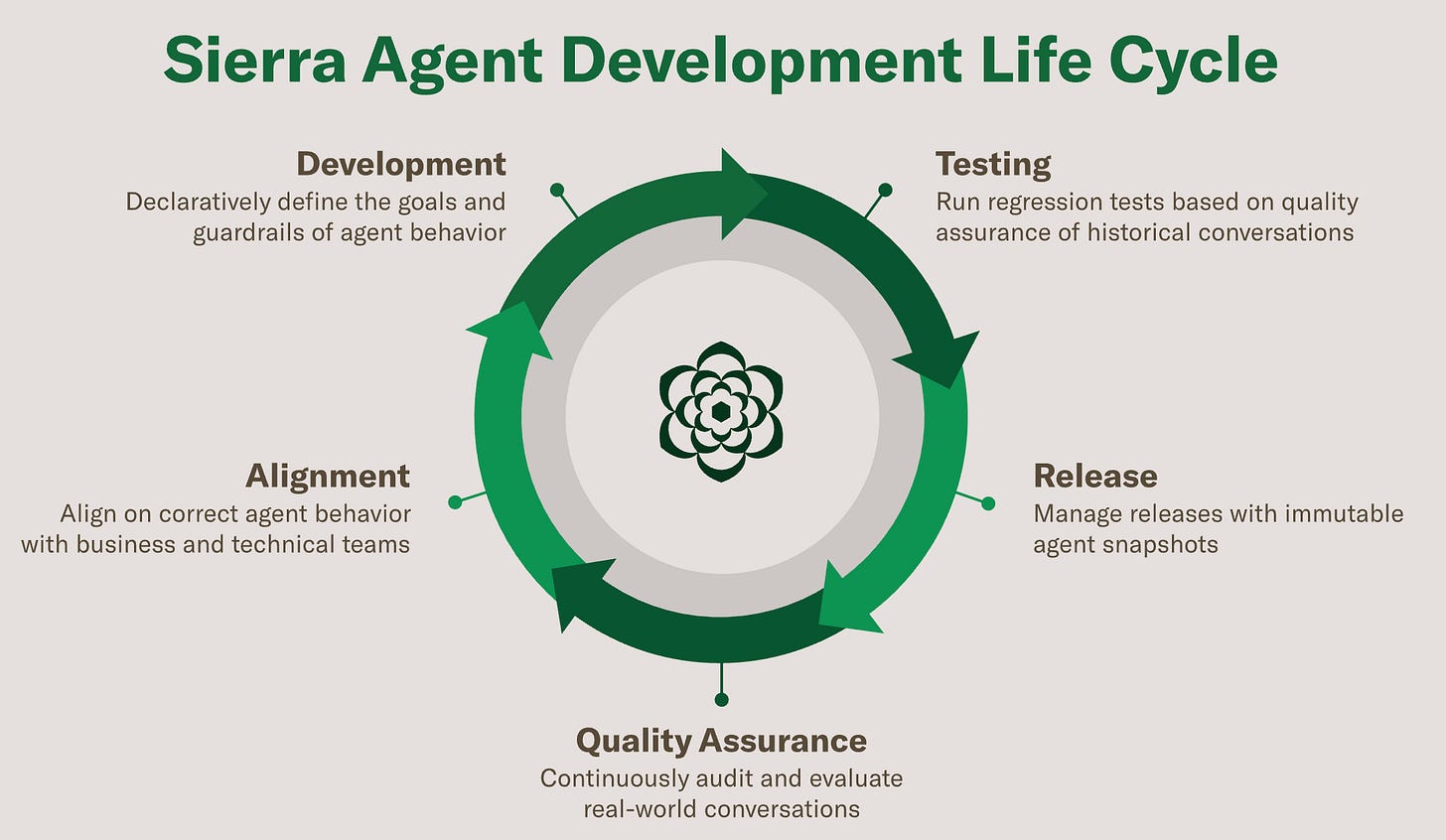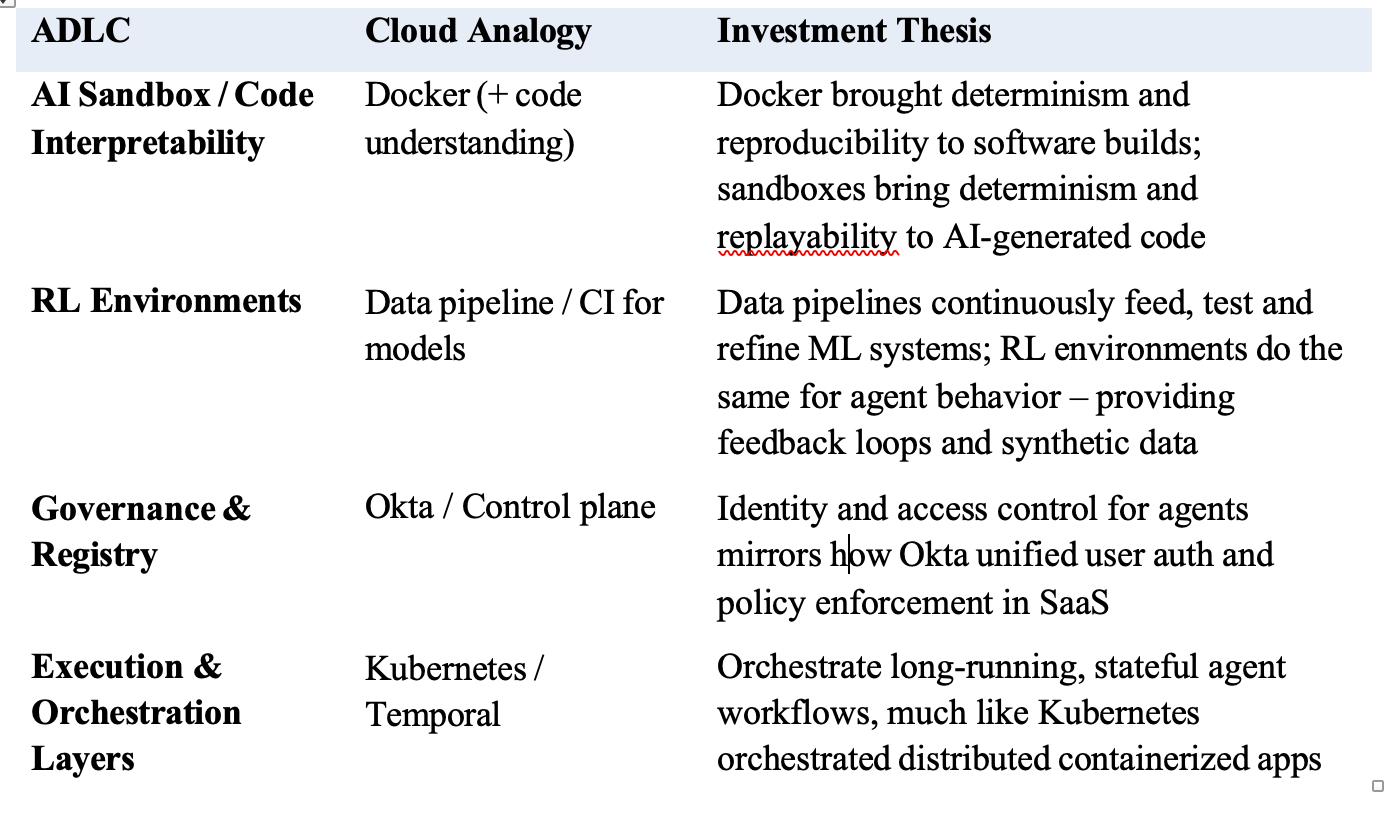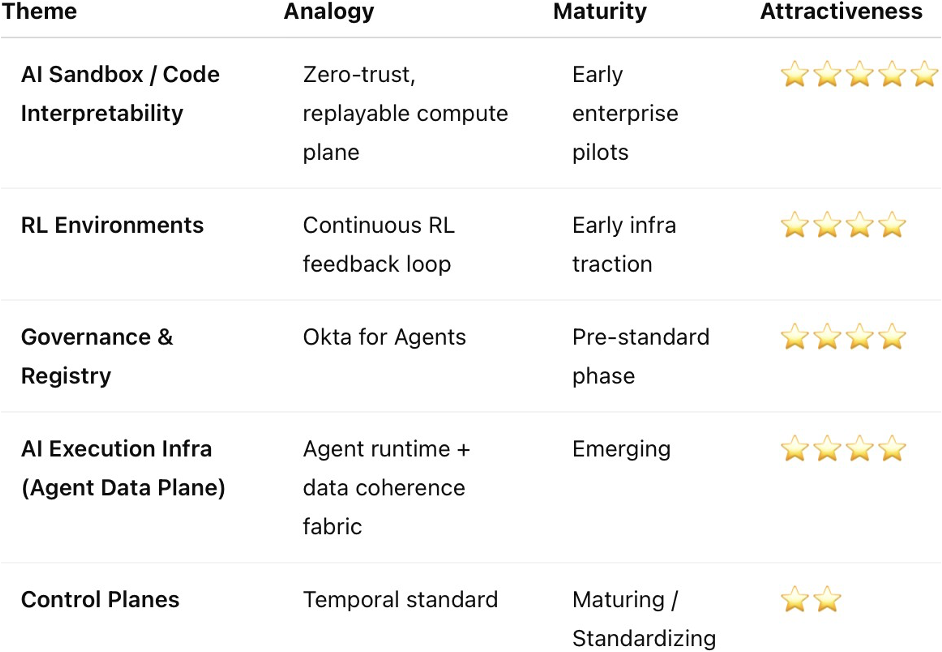From SDLC to ADLC: Agent Development Lifecycle
From prototype to production: the developer infrastructure for building reliable agents
The Agent Development Lifecycle (ADLC) defines how AI agents move from prototype to production—doing for autonomous agents what the SDLC did for software. The first wave of AI agent tooling proved unreliable; the next wave addresses this critical weakness in reliability, governance, and control. Enterprises will pay for trust, not intelligence.
Below you can see an example described by Sierra:
Why the ADLC Exists
The Agent Development Lifecycle (ADLC) defines how autonomous systems move from prototype to production, establishing the reliability and governance foundation for the agentic era. Just as the Software Development Lifecycle (SDLC) industrialized software engineering, the ADLC is doing the same for intelligent agents.
Below are a few key areas that are emerging as key parts of the ADLC stack:
The central insight: enterprises will pay for reliability, control, and visibility over autonomy—not for intelligence alone.
The last wave of agent frameworks proved agents could plan and act but failed to deliver operational reliability. They were stateless, brittle, and non-deterministic, unable to meet enterprise standards for safety, compliance, and interpretability. The next generation—anchored by Databricks Agent Bricks, OpenAI Agents SDK, and Temporal—brings new foundational infra for durability and control.
Winning companies will:
Abstract complexity into deterministic, explainable primitives.
Integrate with enterprise control planes for identity, policy, and observability.
Monetize reliability, not model intelligence.
The ADLC represents the industrialization of AI autonomy: a shift from building agents that can think to building infrastructure that ensures they can be trusted.






This piece realy made me think, it’s clear the agentic era demands robust governance, though achieving true determinism still seems like a big challenge, no?
Love this!